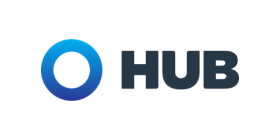
Client:HUB International
Industry:Insurance
Region:North America
AI supports ‘extreme growth’ at HUB International

60
processes transformed across multiple lines of business
Client Overview
Founded in 1998 and employing over 17,000 people across more than 530 offices throughout North America, HUB International is ranked among the world’s top five insurance brokers. It provides a wide range of risk, insurance, employee benefits, retirement, and wealth management services to over two million clients. It has total revenues of more than $4 billion.
In just over 25 years, HUB International has grown to be one of the world’s leading risk management and insurance brokers. It’s done it by putting clients at the very heart of its business—and through strategic acquisitions. But while scale is one of HUB International’s greatest assets, it’s also one of its biggest challenges.
Using the latest in automation and generative AI (GenAI) and specialized AI, the company has radically streamlined operations across multiple lines of business. It's improved data processing capabilities, slashed costs, and reduced reliance on third-party service providers. Crucially, it’s been able to break down the barriers associated with fast growth at scale.
“HUB International is very growth-orientated. We do a lot of mergers and acquisitions (M&A). And more M&A means more work—particularly as we acquire mid-size businesses that have very different systems, data, and ways of working,” said Thach Nguyen, Director, Digital Innovation at HUB International.
When Nguyen says “more,” he means it. On average, HUB International acquires around 60 businesses a year. And while integration is a highly tuned activity, each acquisition brings a unique set of challenges.
The issues of scale aren’t limited to extreme growth through acquisition. In the HUB Financial Center—the finance and accounting shared services function serving all the company’s decentralized lines of business—the sheer number and type of documents needing to be processed is staggering. Most of that work—data entry, manipulation of spreadsheets, reconciliation—had been completed manually, by an army of people from a third-party vendor.
Automation offered a major opportunity to speed up processes, as well as reduce errors and third-party labor costs.
We started from scratch with automation and UiPath. Then we really ramped up automation in finance. It’s really helped to standardize and normalize processes. So, as more M&As come on board, we’re able integrate them more quickly into the business.
Thach Nguyen, Director, Digital Innovation, HUB International
Expanding beyond finance
Small successes support larger improvements. So, having delivered real value in finance—driving efficiencies in shared services and reducing the amount of third-party vendor support—Nguyen began looking for automation use cases across the business. It was at this point that HUB International began exploring a broader set of capabilities within the UiPath Business Automation Platform™. This included UiPath Document Understanding™ to drive the company's industry-leading intelligent data processing (IDP) capability.
Nguyen started by transforming the HUB Mail postal service. Previously, teams had to manually upload and process every document, routing the appropriate information to the correct office, department, and advisor. That’s all changed. By automatically reading, understanding, and extracting the data—then adding it into an automated workflow—Document Understanding has made light work of these manual tasks.
We were able to demonstrate more value, and this led to projects in other business areas.
Thach Nguyen, Director, Digital Innovation, HUB International
Deploying AI and automation
A more complex initiative followed—leveraging both the specialized and generative AI features of Document Understanding. The objective was to read, identify, and extract relevant data from the company’s 900,000+ documents—then repurpose and standardize the data for delivery into HUB International’s fiduciary decision system.
If the first challenge was volume, the second was a lack of consistency. Unlike the postal use case, where there was little variation in documents, this project aimed to tackle a wide variety of types and formats—everything from financial and investment advisory statements to multiple policy documents. “A retirement plan from one office looked very different from those delivered by other offices,” said Nguyen.
Making sure the right information was surfaced, standardized, and delivered to the correct system needed the ‘brains’ of AI and the ‘muscle’ of automation to get the job done.
Next came a program to streamline email management for MGA Canada, a Canadian division of HUB International’s Specialty Products Group. “The business process starts with email. Customers send in their submissions, and we use NetSuite to create cases for new policies, endorsements, claims, and more. We have to make sure we can categorize and classify the email, extract the data, and input it into NetSuite,” said Nguyen.
Using its embedded AI capabilities, UiPath Communications Mining™ automatically scans each email, understands its context, and extracts the relevant and important information. This data is then passed downstream to inform the appropriate workflows in NetSuite.
“We’re derisking AI today and futureproofing our AI solutions tomorrow using UiPath capabilities,” said Nguyen.
Taking an art of the possible approach
As HUB International’s AI and automation program has expanded, Nguyen’s approach has changed. “When we began, we had tunnel vision. We used to think ‘automation can only do this.’ Now we’re thinking about the art of the possible. Forget what people think automation can do and really look at what’s possible and work from there,” said Nguyen.
This has proved to be a ‘lightbulb moment’ for the business. As HUB International’s RPA Center of Excellence (CoE) expands, its programs are becoming much more strategic. Across the company, teams are actively focusing on identifying problems and looking for improvement opportunities. Only then does Nguyen and his team get to work on solution design—exploring how to apply the multiple capabilities within the UiPath Platform to turn these opportunities into reality. And the business owners are getting involved, too—co-creating automations to drive real outcomes.
We’ve shown real business value and grown automation organically. Now it’s become critical to have more controlled, more optimized, and more efficient growth. Which is one of the reasons I’m engaging a lot of UiPath resources.
Thach Nguyen, Director, Digital Innovation, HUB International
HUB International is extending its use of IDP across the business, tackling increasingly complex use cases to extract valuable data from both documents and communications. And it’s going further. Using UiPath Task Mining™ to gain deep insights into current ways of working, the company’s discovering new process improvement opportunities that take efficiency to the next level. This, together with Communications Mining, is allowing Nguyen and team to increase business engagement, collaboration, and value.
UiPath Action Center, Orchestrator, and Integration Service are simplifying provisioning, deployment, and integration of its growing robot estate. And, having reached critical mass, UiPath Automation Cloud™ is helping HUB International scale AI and automation across the enterprise.
We’re now combining multiple products together to solve problems. It’s been our ‘aha!’ moment…when we say ‘hey, you know what? Yes, we can do it.
Thach Nguyen, Director, Digital Innovation, HUB International
HUB International’s executive leadership shares that same sentiment—seeing AI-powered automation as the strategic lever to support the business as it continues its program of extreme growth. Now, with more than 60 processes automated across the back office, teams in finance and accounting, underwriting, Know Your Customer (KYC) compliance, and more can make better business decisions.
This is not just about time saved or [cost] avoidance. It’s about automation providing high-value opportunities to grow market share.
Thach Nguyen, Director, Digital Innovation, HUB International
Related case studies
Ready for your own case study?
Speak to our team of knowledgeable experts and learn how you can benefit from RPA.





